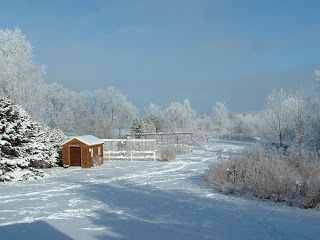Used the pH tester to check the soil acidity for each row in the vineyard
Comments:
It's been awhile since I checked soil for pH, so I thought I'd see how things looked. I used the rapitest pH meter. First, you scrape away a couple inches of soil, then work up the soil for about 4-5 inches. Add enough water and mix to create a muddy slurry.
Then you insert the metal probe into the soil and wait about a minute to take your reading. As you can see, the needle shows a pH of almost 7. I am looking for a reading in the neighborhood of 5.5-6.5. This reading was in an area where I will be planting the Frontenac Gris this spring. I removed the Concords that had been growing there and perhaps they didn't do well since the soil needs to be more acidic. I'll work some fertilizer for acid-loving plants into the soil, retest, and see how that looks.My row-by-row results were as follows:
Row 1 Frontenac Gris 6.5-7 (almost 7)
Rows 2 and 3 Pergola (Niagaras, aurore, De Chaunac 5.5-6, each row
Row 4 aurore, De Chaunac, Cayuga white 6-6.5
Row 5 Concords 6.5
Row 6 Reliance seedless, Frontenac, Cayuga White, Norton 6-6.5
Row 7 Nortons 5.5-6
In all, things looked pretty decent. I realize this is only a pH test and I really know little about the composition of the rest of the soil and will look into what it will take to get it tested as well.





